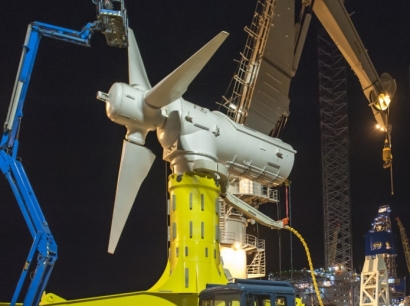
It is expected that the data center would be connected to multiple international subsea fiber optic cables, offering a fast and reliable connection to London, Europe and the US. Further connectivity to the central belt using domestic terrestrial networks could significantly improve Scottish data and connectivity resilience.
The MeyGen project has a seabed lease and consents secured for a further 80MW of tidal capacity, in addition to the 6MW operational array which has now generated more than 20,000MWh of electricity for export to the grid. The target operations date for the data center is expected to be 2024, in line with the expansion plans for the tidal array, however a smaller initial module could be deployed sooner to draw on the output from the existing tidal array.
Atlantis has been working with AECOM, the multinational engineering firm, to assess the feasibility of connecting to high speed international fiber optic connections and undertake the systems design for a data center with access to predictable renewable generation with grid back-up, at a location which benefits from low temperatures to assist cooling.
The data center could also alleviate constraints on other local renewable energy development, which is restricted by the current grid capacity and the closure of renewable energy subsidy mechanisms. Projects including MeyGen would be able to sell power directly via a new private wire network and thus are expected to benefit from a premium to the wholesale power prices which are achieved when dispatching output via the national grid.
It is expected that the turbines to power this giant data center will be manufactured in Scotland.
Tim Cornelius, CEO of SIMEC Atlantis, commented, “We believe that Scotland can play a key role in the global data centre industry thanks to its ready access to clean energy and we are eager to play our part at Atlantis to turn this potential into reality.”

